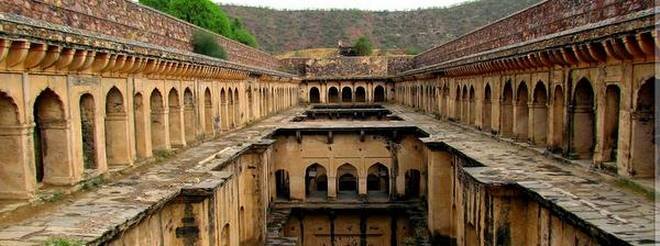Indian Heritage & Culture
Monuments of National Importance
- 01 Jan 2019
- 3 min read
Archaeological Survey of India has declared following monuments of national importance:
- The ancient Neemrana Baori in Rajasthan's Alwar district;
- The Group of Temples at Ranipur Jharail in Odisha's Bolangir district;
- The Vishnu Temple in Pithoragarh district, Uttarakhand;
- High Court Building in Nagpur, Maharashtra,
- Two Mughal-era monuments in Agra — Haveli of Agha Khan and Hathi Khana.
High Court Building Nagpur
- The Nagpur High Court building is called a Poem in Stone because of its beautiful structure.
- The most conspicuous feature of the High Court frontage is the Dome, the grand entrance, both towers, and the majestic staircase.
- It was designed by Architect H.A.N. Medd.
- Greek influence can be seen prominently in the columns. The predominant Roman features can be seen in the ornamentation of both square and arched alcoves.
- The Renaissance drum is cylindrical and elongated. Over it are Rajasthani Chhatris. The dome has the resonance of the soprano.
Neemrana Baori– Rajasthan
- The Neemrana Stepwell was built in 18th century by Thakur Janak Singh.
- It is also known as Rani Ki Baoli in the local language.
- The primary cause of the creation of this step well was to create employment during the famine that hit the area during that period.
- It is located in Alwar district of Rajasthan.
Ranipur –Jharial- Odisha
- A group of temples near Ranipur Jharial in Balangir district of Odisha has been declared as a monument of national importance.
- Ranipur Jharial is known as “Soma Tirth” in scriptures.
- It is a combination of religious faiths of Shaivism, Buddhism, Vaishnavism, and Tantrism.
- The site is famous for Chausath (64) Yogini temples or the temples without roofs—known as the hypaethral temples.
Archaeological Survey of India (ASI)
- ASI is the premier organization for the archaeological research, scientific analysis, excavation of archaeological sites, conservation and preservation of protected monuments.
- It is an attached office under the Department of Culture (Ministry of Culture).
- ASI was founded in 1861 by Alexander Cunningham who became its first Director-General.





